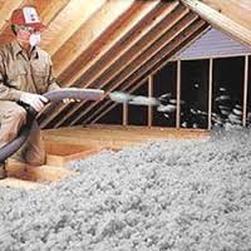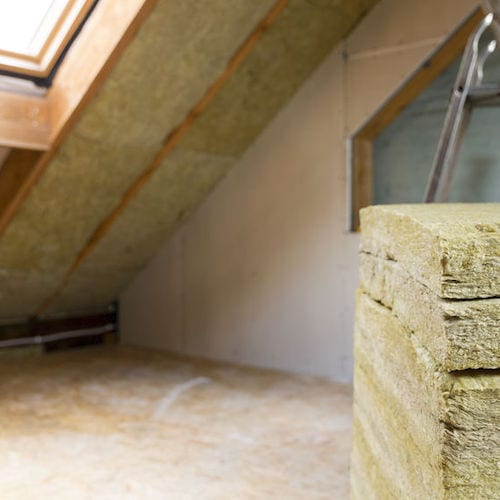It is relatively new to the market but is readily available throughout the usa and very price competitive with spray foam.
Safety of blown insulation attic roof off gassing.
One blowing air from the attic to the outdoors and another blowing air into the attic from the living area of the house.
It is far more likely off gassing is either excess polyols or some of the additives in component b.
If you are going to use blown in cellulose insulation know that it is dusty.
Building codes say that you don t have to ventilate attic spaces where there is spray foam on the underside of the ceiling because the spi spray foam insulation will supposedly keep out any moisture but it seems crazy to just seal off this space so we are going to install some limited ventilation in the form of 2 bathroom type fans.
Blowing insulation into walls is best left to the pros because it involves drilling into stud spaces that may contain electrical.
Earlier this year i got a question about a home that had spray foam insulation in the attic.
To keep the blown in insulation from falling through the attic hatch opening make a 2x12 dam around the hatch perimeter.
A lot of builders and homeowners are going with spray foam insulation because of the airtightness benefits but then the questioner mentioned that the spray foam contractor had intentionally left big holes to the outside by not sealing the gable vents.
What is uder the exposed foam as to some areas blown on way off stoichiometric i have.
Ventilation channels adjacent to roof sheathing and attic ventilation were never intended as remedies for a house with high indoor humidity problems.
The airflow from the soffits to the ridge vent keeps the roof cool and prevents ice dams and the material will block that flow.
Handy homeowners can install blown in insulation in the attic.
Then to really seal the attic access up tight says olson lay fiberglass batt insulation on the inside of the hatch or door and wrap it up tight like a christmas present photo 3.
But i am looking for an insulation specialist that is informed about their products and makes an effort to choose the safest products possible farrow s quest is the subject of this q a spotlight.
Attic insulation protects the area from freezing temperatures but we recommend insulating plumbing lines too.
I am not asking an insulation specialist to make medical claims or ensure the safety of materials she continues.
Covering up the soffit vents with loose fill or batts which can happen if you stuff insulation along the eaves is a huge no no.
For the same reason insulation shouldn t touch the roof s underside.
Anytime anyone goes up into your attic there will be insulation on them and pieces coming out into your house from the attic entry point.
Nothing unusual about that.
That is pure wool insulation.




























